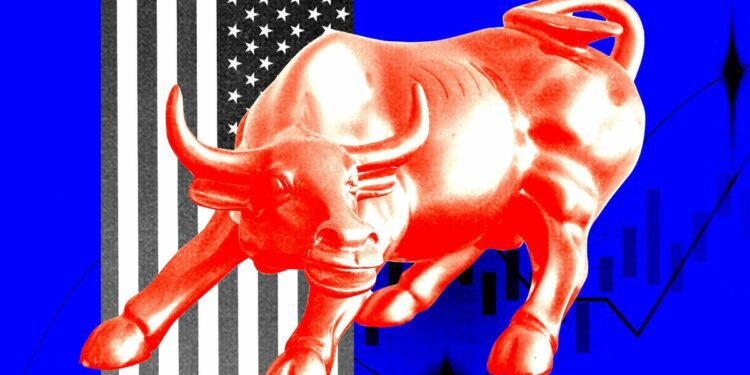Bank of America
“This has led to fewer questions about downside risks and more on upside risks,” BofA summarized in a Monday note.
Reacceleration could make investors uneasy, dashing hopes for swift rate cuts from the Fed. As inflation ticked up to 2.4% in September, odds of an upcoming half-point interest rate cut have tanked, and investors see 25 basis points as the most likely move in November.
According to BofA, a no-landing scenario is bullish for stocks as long as inflation doesn’t flare up again.
The trading playbook
Harris Financial Group’s Jamie Cox told Business Insider that an inflation rebound is unlikely. In his view, inflation will continue to come down, allowing the Fed to lower rates gradually.
Paired with strong GDP growth, investors should readjust expectations of how deep these rate cuts will be, the managing partner said.
According to Cox, that means that short-term interest rates will drop to around 3% in the no landing scenario, even if long-term rates remain elevated.
That’s good news for equities, as it will prompt money market investors and T-bill traders to move back into the stock market, he said.
As this happens, high-dividend value sectors with strong cash flows will receive a boost. These include staples, utilities, and telecom. A steepening yield curve should also benefit financials.
“They’re not going back and buying Nvidia, that money is not going back into Apple and all that kind of stuff,” Cox said, referring to go-to tech names during the rate cycle’s peak. “You can see the flows of funds, you know, back into dividend-paying stocks. And that’s why the market’s broadening back out.”
Meanwhile, small caps can also expect to see upside, he said. The rate-sensitive sector has been under pressure in past years but was recently upgraded to neutral by Morgan Stanley. The bank said it would turn “outright bullish” on the sector if upward revisions to GDP continue, among other things.
Whatever investors do, they shouldn’t get bearish and sell.
After all, a no landing scenario is the best outcome for the economy, Cox said, and given hot growth, the situation effectively tosses recession fears out the window.
This would be just the fourth time in US history that the Fed has cut interest rates without a downturn, he added. In each case, markets were incredibly strong two to three years out, he said.
“[This scenario isn’t] the base case for a lot of people who want bond yields and interest rates to drop a lot, and I think that people need to be careful about what they expect the Fed to do,” the managing partner said. “The rates are not going to drop as much as what people think, and that’s okay; it’s actually good.”
Source link : http://www.bing.com/news/apiclick.aspx?ref=FexRss&aid=&tid=6714f853e937487aba65f38fdfd9dfd6&url=https%3A%2F%2Fmarkets.businessinsider.com%2Fnews%2Fstocks%2Fus-economy-no-landing-stock-market-outlook-advice-inflation-recession-2024-10&c=13231846499244258453&mkt=en-us
Author :
Publish date : 2024-10-20 01:18:00
Copyright for syndicated content belongs to the linked Source.












